
I remember first seeing a thick carpet of winter aconites while we were visiting a botanical garden a few years ago. Yes, we’re the kind of people who visit botanical gardens in winter. Warm and lush green glasshouses do wonders for the soul on a gray February afternoon.
But that particular afternoon, the allure of the greenhouses was only half the fun. The thrill and excitement of seeing all these cheerful flowers, resembling hundreds of tiny little suns peering at the sky, was a sight for winter-weary eyes.
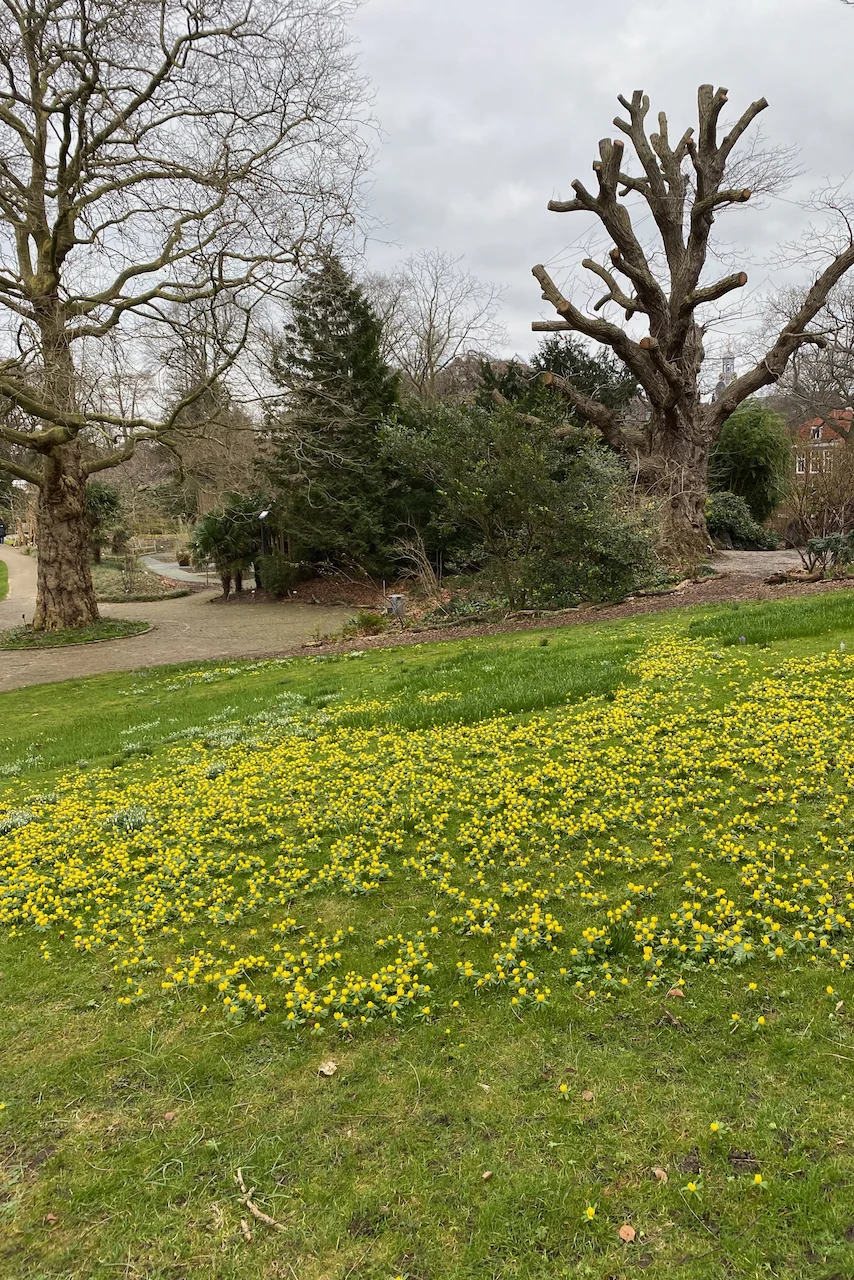
Up to that point, I had only seen winter aconites in potted arrangements. They are very pretty flowers in spring containers, but when they form a sea of yellow sunshine, it really makes for a spectacular sight.
Since then, I discovered a few more reasons why we should all consider growing winter aconites in our gardens:
1. Winter aconites bloom really early in the year.
Winter aconites (Eranthis hyemalis), are one of the first spring bulbs to bloom. Depending on the soil and the exposure, these members of the buttercup family (Ranunculaceae) will sometimes poke their heads out even before snowdrops. In fact, you will probably start noticing them in late January and early February.
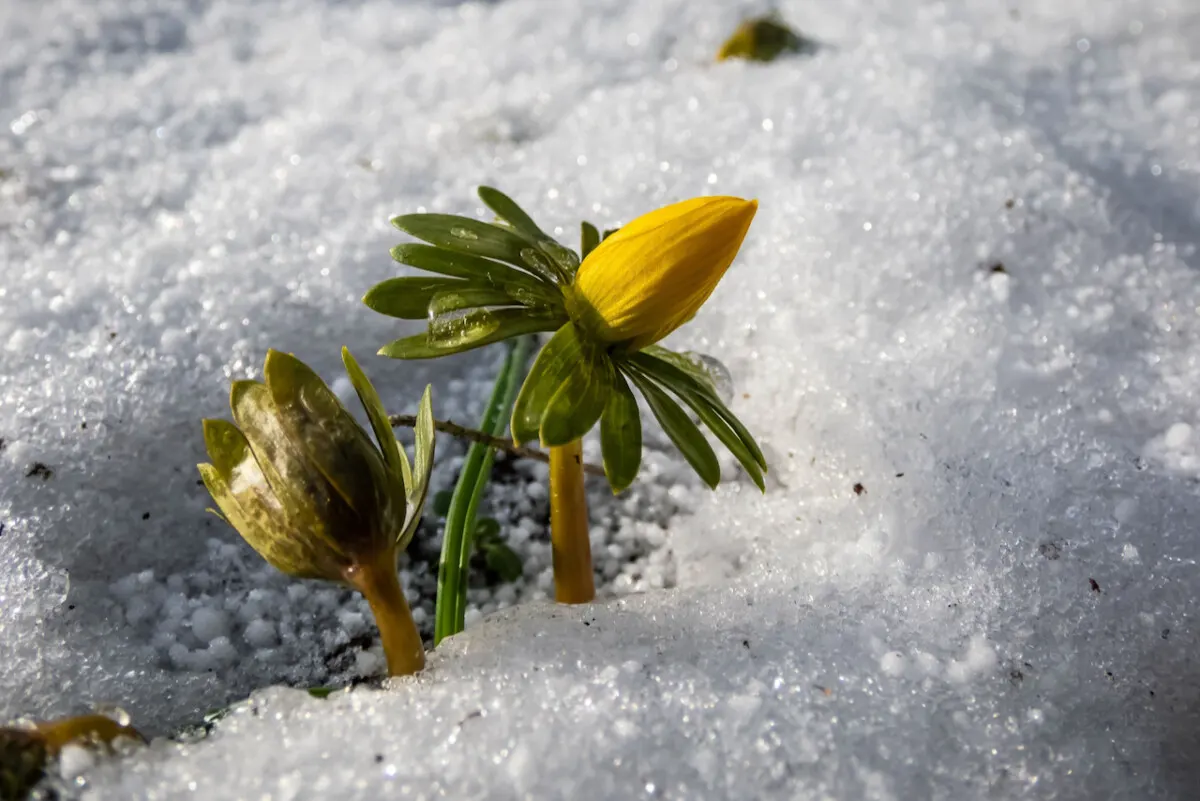
Their timing couldn’t be more perfect. It coincides with the awakening of other spring bulbs, such as snowdrops, cyclamen and crocuses. But unlike them, winter aconites spring up flower first, only then followed by a green skirt of foliage.
Another thing I like about them is that the golden goblets of the winter aconites open up at the same time as winter jasmine (Jasminum nudiflorum) and forsythia, two shrubs that bring the same kind of sunny glow to the drab winter garden.
2. Winter aconites perennialize really well.
Eranthis is a herbaceous perennial that grows from tubers. We can plant the tubers in the fall and get flowers only a few months later. Aconites make excellent additions if you’re looking to naturalize bulbs in your lawn. For a fuller look, I would recommend planting the tubers in clumps.
By mid-spring, both the flowers and the foliage are gone; then the whole plant retreats underground. It will re-emerge again the following spring without any extra work needed on our part.
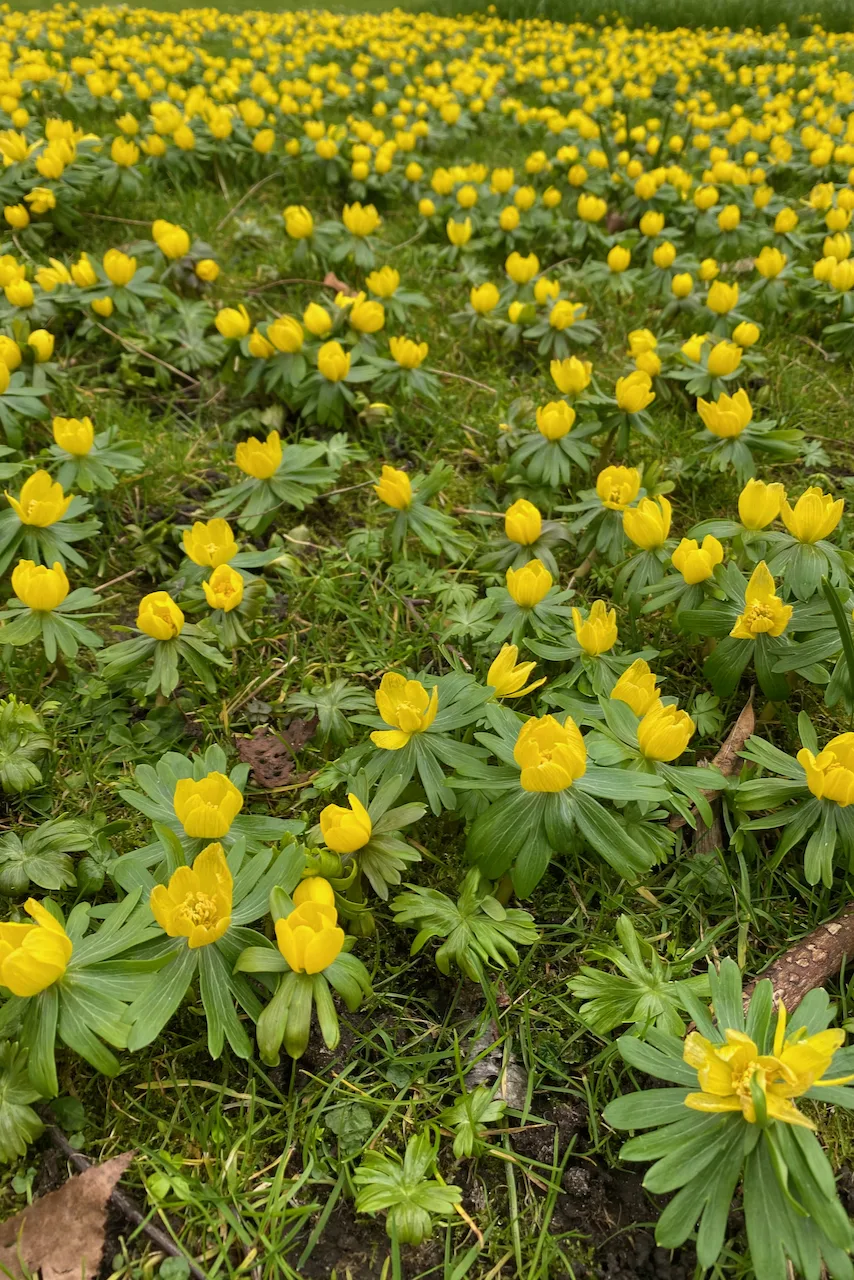
You may have heard that aconites are invasive. However, the winter aconite is not true aconites, such as monkshood and wolfsbane (part of the Aconitum genus), but a member of the Eranthis genus. So while it does reproduce reliably, it’s easy to keep on top of the spread by simply pulling out the rhizomes or dividing them and replanting them.
By the way, if you’re interested in perennializing bulbs in grass, have a look at this article I wrote.
3. Winter aconites are one of the first flowers to feed pollinators.
There’s not much around in February to feed the pollinators that come out of dormancy early. Winter aconites, with their yellow cup-shaped open flowers, are one of the first plants to offer pollen to insects in late winter and early spring.
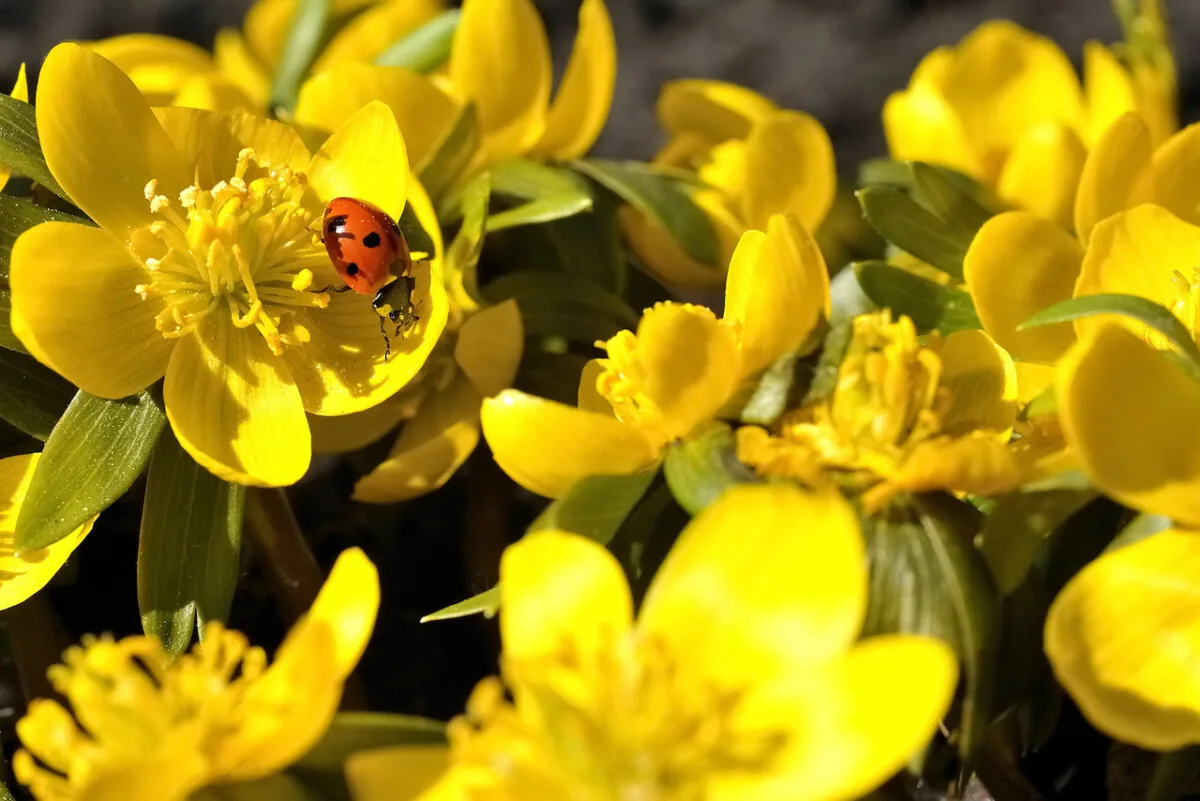
Ladybugs (one of the first beneficial bugs to emerge from the winter slumber) and early bees are big fans of winter aconites.
4. Winter aconites can handle poor soil.
Winter aconites are native to the calcareous forests of Turkey, the Balkans and Southern Europe. They’ll grow well in poor soil, although if you have soil rich in clay, it may need some amending with fresh compost.
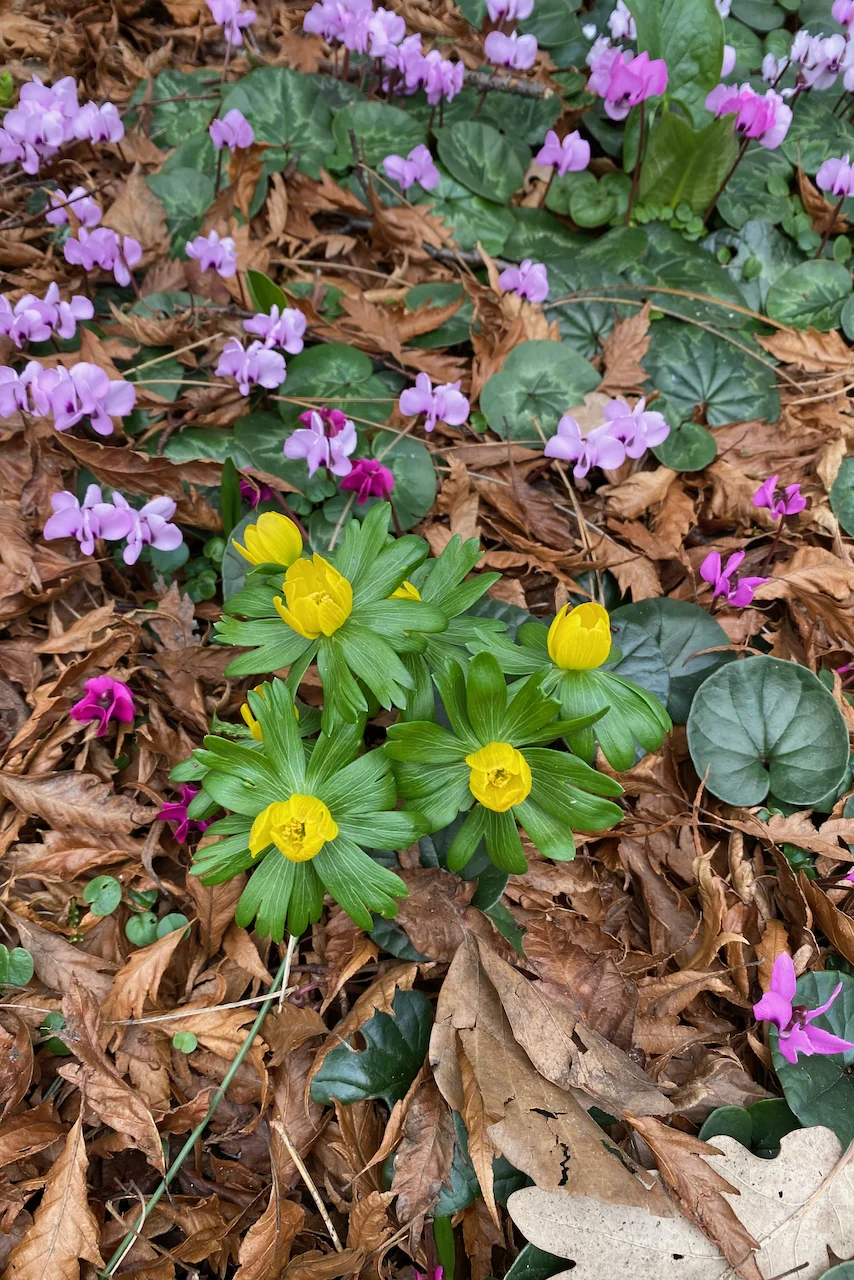
Winter aconites have shallow roots and the tubers stay just below the surface, but they don’t need any extra protection. If you plant them under deciduous trees (see below), then using the fallen leaves as natural mulch will work really well to keep the rhizomes happy in the off-season.
5. They love growing under trees and shrubs.
Winter aconites are what’s called a “spring ephemeral” plant. That means it has adapted to coming out in bloom when the conditions are just right, then retreats back and waits for the same conditions again next year.
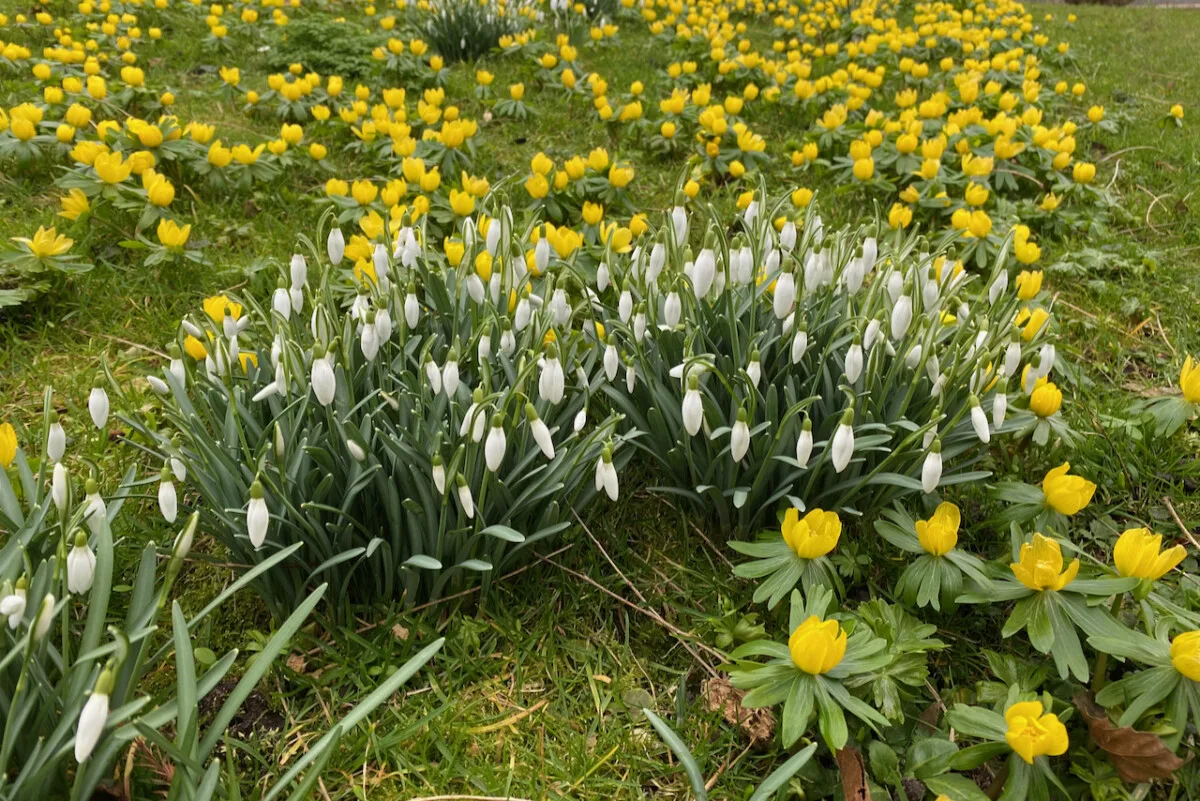
In the case of Eranthis, this short period of time is when the soil is still wet and fairly chilly, but the days are getting longer and there may even be the possibility of sun. At the same time, the trees are not yet in leaf, which means plenty of light can reach the winter aconites through the bare canopies all the way down to the woodland floor.
That’s why aconites will usually thrive under trees and shrubs, where not much else does. They need a spot that stays relatively cool and moist in the summer.
6. Winter aconites look beautiful in containers.
This one is for those of us who don’t have a dedicated spot to perennialize aconites. When we buy an arrangement, we’re usually buying Eranthis cilicica. They look similar to Eranthis hyemalis, but they bloom slightly later in the season (but still very early in spring).
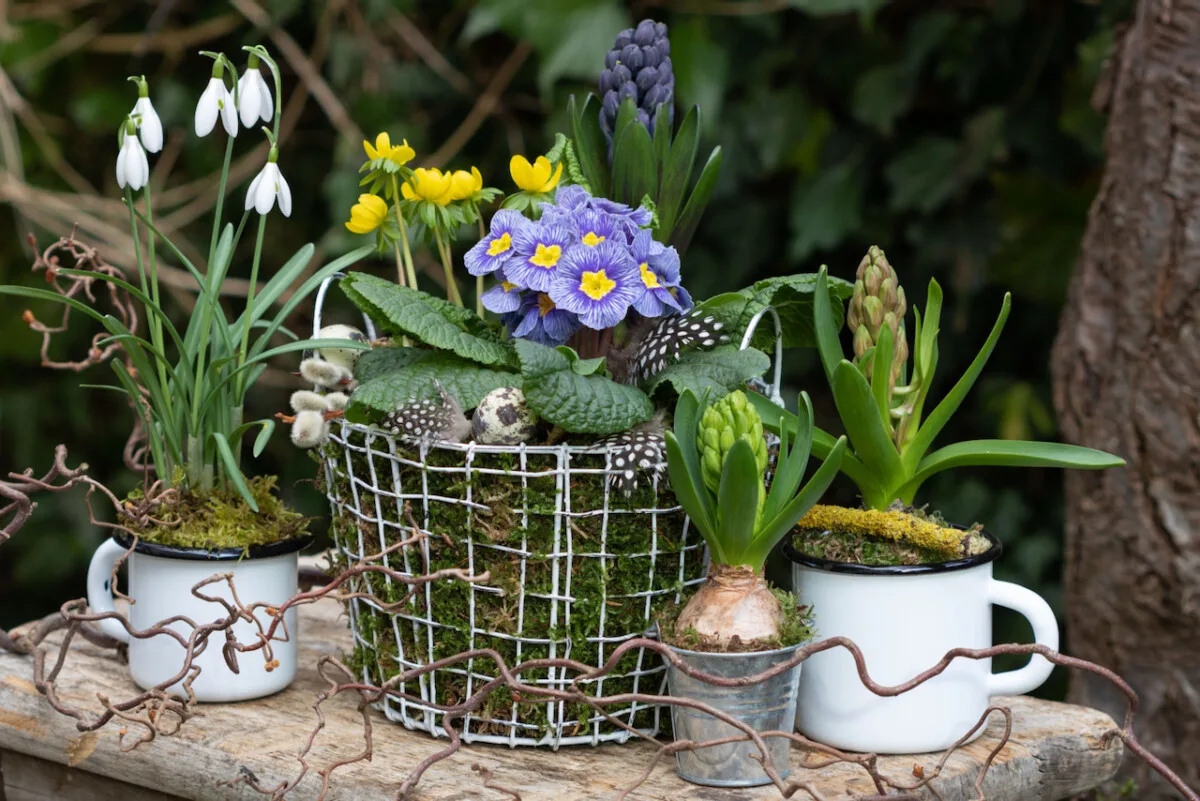
You can pair them with snowdrops, cyclamen, hellebores and winter primroses (Primula vulgaris) for a spot of color on the balcony or the deck.

